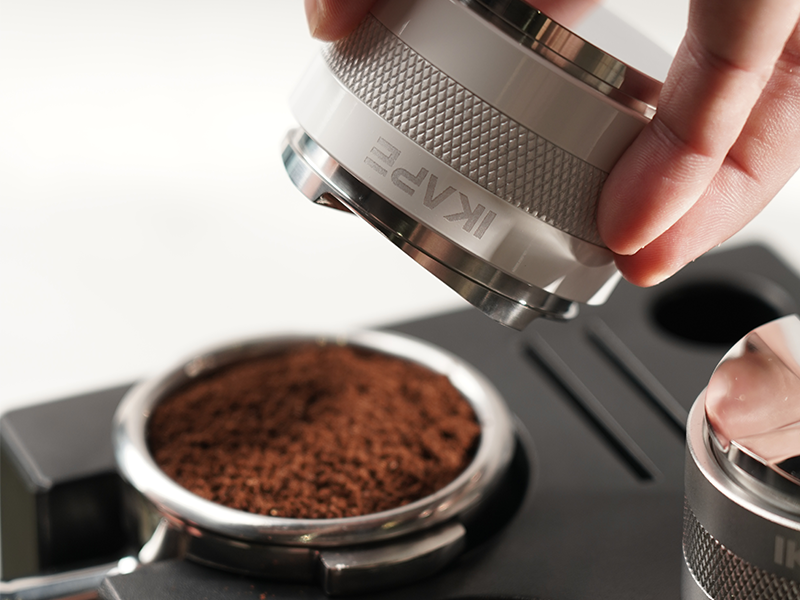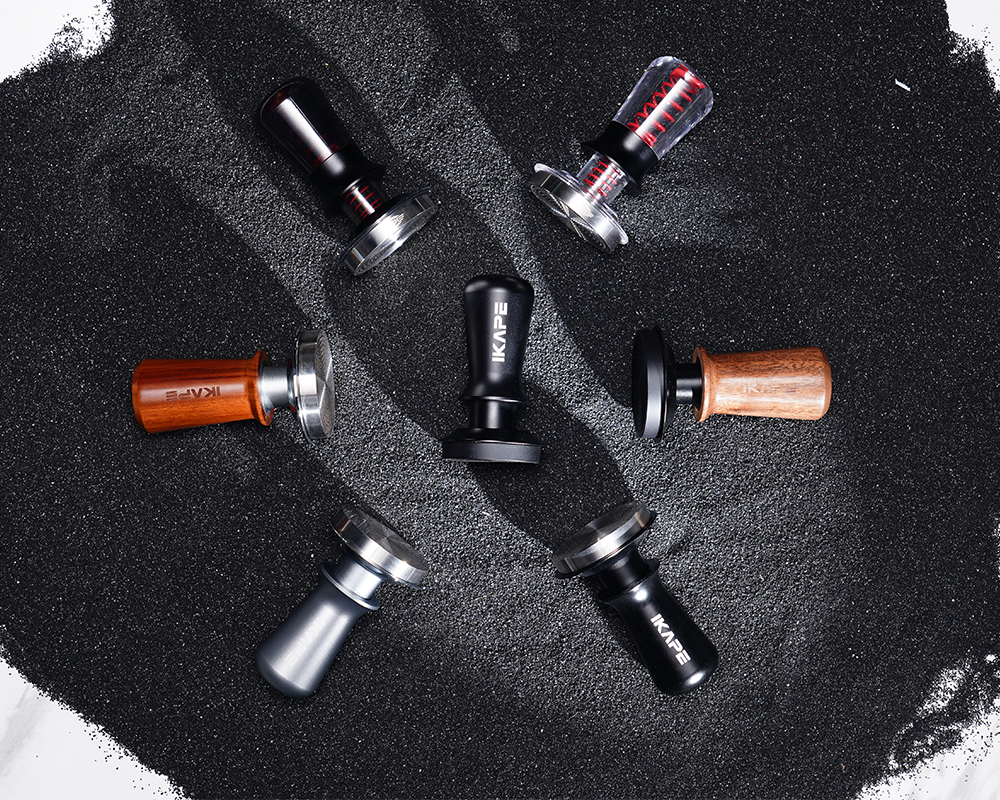How the Coffee Distributor works
Surface tension and capillarity: the size of the gaps between the coffee grounds determines the path of the water flow. The Distributor reduces localized“low resistance zones”( loose areas where the water flows preferentially) by uniformly filling the gaps.
Torque and Pressure Distribution: The rotary dispenser converts vertical pressure into horizontal shear by means of a helix, which breaks down the internal stresses in the powder layer, resulting in a more balanced density.
Channeling effect
Channeling effect: When extracting, hot water will find the path of least resistance to flow through the powder. If the density of the powder cake is uneven, the water flow will break through the weak area, forming a channel, resulting in uneven extraction of part of the coffee, known as the channel effect.
Causes and types of channels
Vertical channels: cracks from the top to the bottom of the powder (often caused by insufficient powder application or loose pre-pressing).
Horizontal channel: separation of the edge from the side wall of the powder bowl (due to excessive amount of powder or uneven distribution of powder).
Microscopic channel: fine pores that are not visible to the naked eye (more likely to occur in lightly baked beans due to the dense fiber structure).
Diagnosis of channel effect
Flow rate observation: normal extraction (25-30 seconds out of 36g of liquid), if the first section of the flow rate suddenly fast (such as 10 seconds out of 20g), may have formed a channel.
Powder state: the edge of the powder is mutilated, the center is concave, or obvious holes appear after extraction.
Flavor Alert: Over-extracted burnt bitterness and under-extracted sourness at the same time, or thin and pale liquid at the end.
How does Espresso Distributor deal with channel effects?
Channeling refers to the rushin of hot water under high pressure into the powder to create cracks or weak spots, causing the water to concentrate on a certain path (similar to a shortcut). Distributor mitigates this problem by:
The “puzzle solver” that breaks up the clumps
Freshly ground coffee powder can form hard clumps (like clumps of moist granulated sugar) due to static electricity and oils. Piercing the powder layer with the needle structure or rotating blade of a grinder physically separates the clumps in a way that finger tapping cannot.
The “topographer” of density balance
The pitfall of espresso bowls is the natural tendency for more powder to build up in the center. The centrifugal force of the powder dispenser pushes the powder at the edges towards the center, creating a “miniature crater” structure (barely visible to the naked eye) with a slightly elevated center and a gentle slope around it, which is the ideal terrain for the even spreading of the water flow.
Channel effect of the “preventive injection”
newbie often due to uneven pressure powder powder cracks (channel effect), the hot water will preferentially flow into the cracks, resulting in uneven extraction. My experience: after 3 rotations of the powder spreader, the difference in the density of the powder layer can be controlled within 0.2g/cm³ (need to be verified with a coffee tamper), which is a precision that is difficult to achieve with manual powder spreading.

How do different baking degree and powder quantity affect the extraction?
1. The influence of roasting degree
Light roasting: hard beans, high density, need to be more finely ground to extend the extraction time. However, fine powder is easy to clump, need to use Distributor to fully disperse, avoid water flow around the clumping area.
Medium-Deep Roasting: The beans are loose and absorbent, with a coarser grind. Over-pressing the powder will easily lead to over-dense powder cake and water flow obstruction. Distributor should be adjusted to light pre-pressing to avoid compacting too tightly.
2. The influence of powder quantity
too much powder (such as powder bowl overload): the powder cake is too thick, the water flow penetrates for a longer period of time, and it is easy to form a high-pressure area at the bottom, which produces channel effect and affects the extraction flavor. Need to reduce the amount of powder or change the big powder bowl to adjust the flavor.
Too little powder: the powder is too thin, the water flow is too fast, and the extraction is insufficient. Need to use Distributor to spread powder evenly and compact properly to increase resistance
Golden Guidelines: The amount of powder should match the labeled capacity of the bowl (e.g. 18g powder bowl with 16-18g powder), and make sure that the top of the powder is about 2mm from the rim of the bowl after spreading the powder.
3. The effect of temperature on the powder
Few people mention the effect of the temperature of the powder bowl. When the bowl is preheated to above 60℃, the fluidity of the coffee powder will change. My suggestion is to wipe the outside of the bowl with an iced towel before dusting, so that the powder layer reaches its optimal structural stability at around 25℃.
How to choose Espresso Distributor?
Material and durability: Prefer metal material (stainless steel, aluminum alloy), which is wear-resistant and not easy to deform; plastic material is lightweight but easy to deteriorate. Different materials will affect the flavor of the extraction.
Adjustability: Press the depth adjustment, adjust the depth according to the amount of powder. Adjustable by knob or spacer for different amount of powder (e.g. 14-22g range).
Strength Adjustment: Pre-pressing strength is adjustable to adapt to light baking (light pressing) or deep baking (slightly heavy pressing).
Compatibility: Confirmation of diameter to match commonly used powder bowls (e.g. 51/54/58mm standard commercial size).
Design details: Rotary vs. Flat: Rotary (with spiral pattern) spreads powder more evenly, but requires practicing techniques; Flat is easy to operate.
Easy to clean: simple structure, no dead space design is easy to dismantle and wash.
Brand and reputation: recommend professional brands: such as ikape (cost-effective), Bravo, or Decent

Summary: Recommendations for novice users
Practice manual powder cloth foundation first: understand the principle of even distribution before relying on tools.
The degree of roast determines the parameters: light roasted beans emphasize breaking up lumps, dark roasted beans avoid over-compaction.
Use less powder than more: Allow room for expansion to prevent the powder from hitting the brewing head.
Cleaning is the key: clean up the residual powder after each use to prevent the accumulation of grease and oil that affects the performance.
We firmly believe that coffee is the warmest sharing bond between people, and an equalizer that breaks down class barriers. In this era full of possibilities, every pair of hardworking hands can realize professional-grade operation through the smart coffee machine, and every heart that loves life can precisely control the water temperature, pressure and extraction time under the empowerment of technology - yes, everyone can easily make a cup of perfect espresso with rich oil and aroma.





